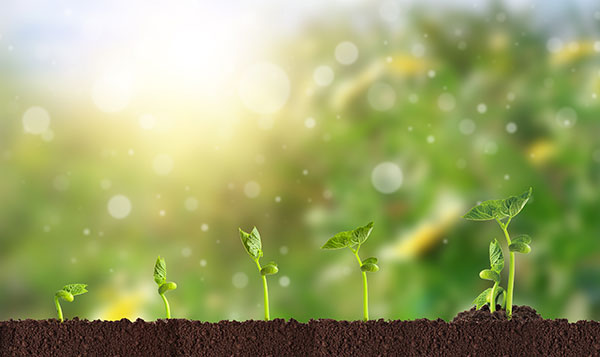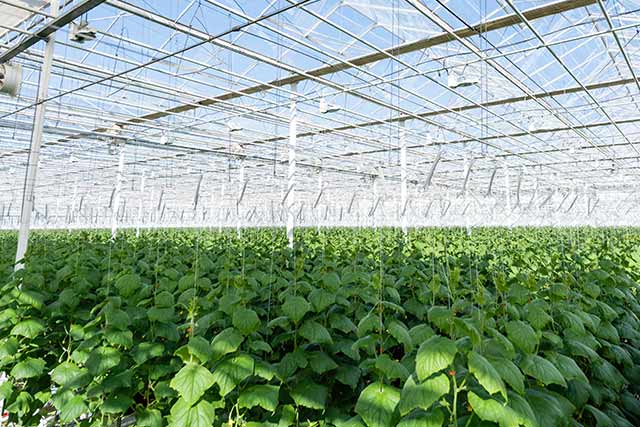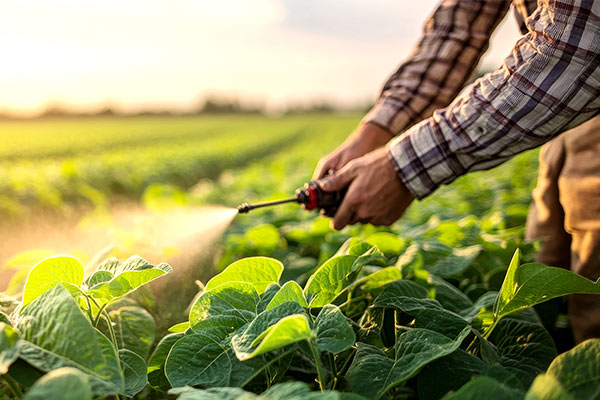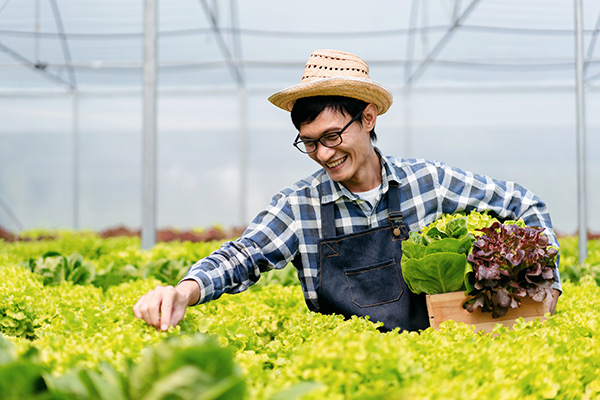-
Home > News & Events > Blog > Plant Nutrition
Apr.29, 2021
By Can Zhou
In 2007, Kauffman et al. defined "biostimulants" in a paper as follows: Biostimulants are materials, other than fertilizers, that promote plant growth when applied in low quantitie. This is the first time that "biostimulants" have appeared in the scientific literature. In the next few years, the research about biostimulants developed more rapidly, and “biostimulants” were increasingly used in scientific literature and industry, thus expanding the scope and definition of substances.

Industry is a key role in defining and promoting the concept of biostimulants including microorganisms. The European Biostimulant Industry Consortium (EBIC) was established in 2011, and in July 2012 it redefined plant biostimulants: Plant biostimulants contain substance(s) and/or micro-organisms whose function when applied to plants or the rhizosphere is to stimulate natural processes to enhance/benefit nutrient uptake, nutrient efficiency, tolerance to abiotic stress, and crop quality. In this process, the industry and scholars have continuously deepened the research on function and mechanism of biostimulants.
The target of biostimulants is the crop itself and the rhizosphere environment, and biostimulants mainly act on the entire life cycle of the crop from seed germination to mature harvest through multiple channels. Biostimulants are different from traditional fertilizers in that they are used in crops through different mechanisms without having to consider whether the products contain nutrients, and also different from plant protection products in that they only act on the growth vitality of crops and obtain systemic disease resistance. Biostimulants has no direct killing effect on pests and diseases. In crop planting, biostimulants act as a synergistic role for plant nutrition and plant protection products, and the three work together to maintain the healthy growth of crops. Roughly speaking, biostimulants are neither traditional fertilizers nor pesticides. They can improve the physiological and biochemical state of plants, increase fertilizer utilization and pesticide effects, improve crop resistance to adversity, and ultimately improve crop yield and agricultural product quality.
According to Bai Youlu, the current director of the Plant Nutrition and Fertilizer Research Office, the current domestic biostimulants products mainly include the following categories: mircobial inoculants and extracts、humic materials、seaweed and plant extracts)、protein hydrolysis and other N-containing substances、chitosan and other biopolymers、inorganic and synthetic products. These recognized plant biostimulants products can be divided into four categories from the sources: 1) marine sources; 2) mineral sources; 3) microbial sources; 4) plant sources.
Yeast metabolites are “mutil-biostimulants” enriched in amino acids, organic acids, polysaccharides, large and medium trace elements, etc., after aerobic fermentation of food yeast, concentrated and refined culture medium. Beginning in the 1940s, studies on the use of yeast metabolites for agricultural cultivation began to appear abroad. By the 1980s, the resource utilization of yeast metabolites had gradually become common.
The relevant R&D team of Angel Yeast Co., Ltd. has conducted long-term research on the composition and function of yeast metabolites, and found that there are a large number of biochemical fulvic acids, amino acids (mainly aspartic acid and glutamic acid) in yeast metabolites, Organic acids (mainly organic acids in the tricarboxylic acid cycle of yeast aerobic respiration, such as malic acid, citric acid, and succinic acid), yeast cell wall polysaccharides mannan and glucan, natural stress resistance component betaine, and Yeast source γ-aminobutyric acid and ergosterol and other substances. In terms of source, yeast metabolites belong to microbial sources; in terms of composition, yeast metabolites contain humic substances, biochemical fulvic acid, nitrogen-containing substances, amino acids, betaine, chitosan, such as yeast cell wall polysaccharides, extracted by microorganisms Species such as a variety of organic acids, γ-aminobutyric acid, ergosterol and vitamins produced in the process of the tricarboxylic acid cycle, the rich ingredients are relatively close to the seaweed extracts.
Through the functional research of yeast metabolites, it is found that yeast metabolites have the functions of improving soil and promoting growth, resisting stress, increasing efficiency and increasing production, and have been verified on many economic crops such as strawberries, citrus and peppers. Based on functions, the components contained in yeast metabolites can be classified as follows.
First class substance | Secondary substance | function |
Quality improvement factor | Yeast peptide | Provide nutrients, stimulate the growth and development of crops, improve the biochemical level of crops, enable plants to overcome stress (drought, frost, root hypoxia), and promote growth. |
Biochemical fulvic acid | Promote growth; improve crop utilization of fertilizer nutrients, reduce harmful substances, and improve quality. | |
Amino acid | After the amino acid enters the plant body, it stimulates the plant, increasing the respiratory intensity, increasing photosynthesis, enhancing the activity of various enzymes, and the fruit is colored and matured in advance to increase the output value. | |
Nucleotide | Nucleotides can cause an increase in the concentration of calcium ions, a signal substance outside the cell membrane, which in turn activates some enzymes related to cell division and material synthesis, and regulates the growth and development of crops. | |
Polyphenols | Improve quality and color. | |
Stress resistance factor | γ-aminobutyric acid | Provide nutrition and promote stress resistance. |
Betaine | It can be used as a broad-spectrum plant growth regulator. It can promote plant growth, especially properly control the openness of crop leaf stomata, reduce transpiration, play an important role in combating drought, improve stress resistance, increase yield and improve quality. | |
Trehalose | Trehalose has a stable biofilm and protein structure and protects biologically active substances. | |
Methyl salicylate Methyl Jasmonate | As a disease resistance signal substance, it binds to plant receptors to induce plant disease resistance. Activate the expression of plant defense genes to produce insect-resistant toxins or enzymes, and induce plants to release colic to attract natural enemies. | |
Yeast polysaccharides | Improve plant immunity and induce plant disease resistance. | |
Soil conservation factor | Organic matter | Relieve soil salinization and provide a good soil microbial environment; improve soil structure and promote the absorption of nitrogen, phosphorus and potassium by crops. |
Organic acid | Reduce the toxicity of heavy metals to crops and repair the soil. | |
Cellulase | Decompose the cellulose in plants, return straw to the field, or use plant straw, rice husk, soybean meal, etc. for decomposing fermentation. | |
Biochemical fulvic acid | Increase soil buffer capacity and improve soil structure; prevent soil cracking and erosion. |
At present, Angel Yeast Co., Ltd. and its 7 domestic subsidiaries have obtained registration certificates for various types of fertilizers (organic water-soluble fertilizers, humic acid-containing water-soluble fertilizers, amino acid-containing fertilizers, etc.) from the Ministry of Agriculture and the Provincial Department of Agriculture. Water-soluble fertilizers, organic fertilizers, bio-organic fertilizers, organic-inorganic compound fertilizers, etc.), and the sales volume of product fertilizers reached 700,000 tons, which was certified by China, the European Union, the United States, and Japan for organic inputs. After continuous deep-rooted work in the field of plant nutrition, the "Yeast Source" product service has opened the prelude to organic growers.
About Plant Nutrition:
The yeast source organic fertilizer has the advantages of being nutritional, efficient, environmental friendly, soil-improving, etc., and it is suitable for the application of high added value agricultural products, animal husbandry and economic crops. Angel is the founder of yeast source organic fertilizer, and the products all have passed through the EU Organic Certification and China Organic Certification.
About Angel:
Angel Yeast Company is a high-tech listed company specializing in yeast and biotech. Product business covers Yeast and Baking, Yeast Extract-Savoury, Nutrition & Health and Biotechnology fields. It is one of the world's leading companies in the yeast industry. Angel has 12 holding subsidiaries and provides products and services for more than 150 countries and regions.
Press contact:
ANGEL YEAST CO., LTD
Address: 168 Chengdong Avenue, Yichang, Hubei 443003, P. R.China
Tel& Fax: +86-717-6371118
Email: weiqz@angelyeast.com
zhanjd@angelyeast.com




